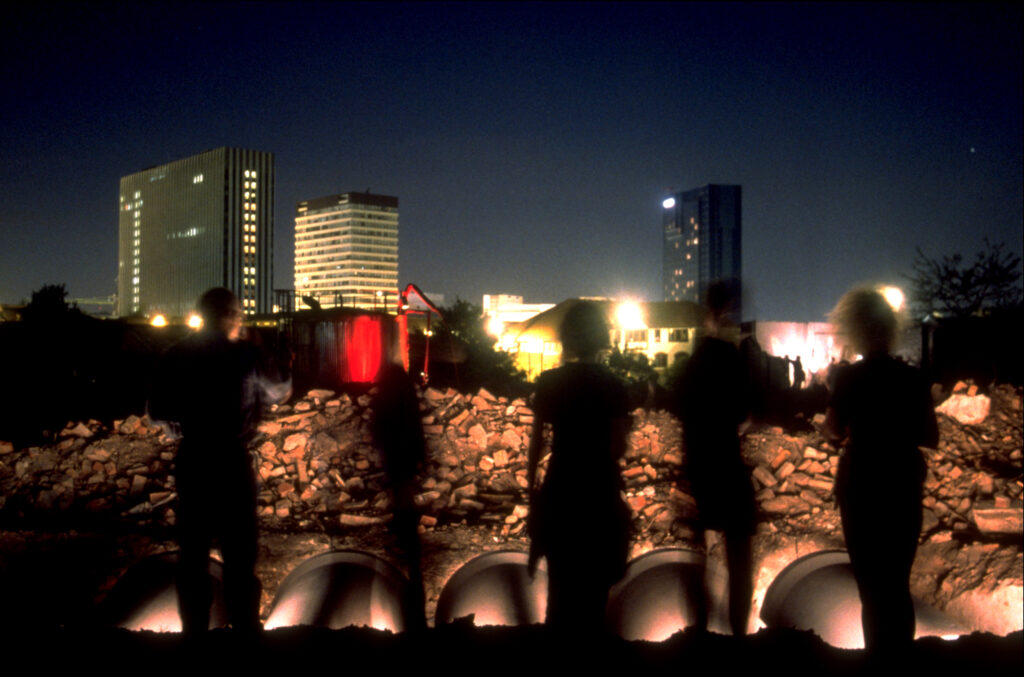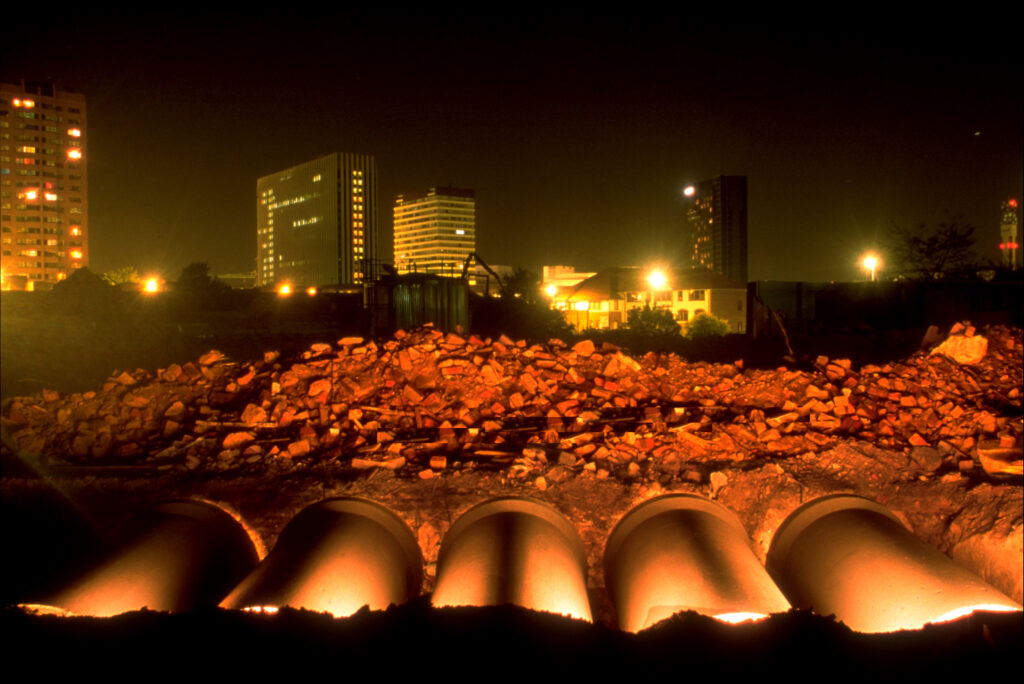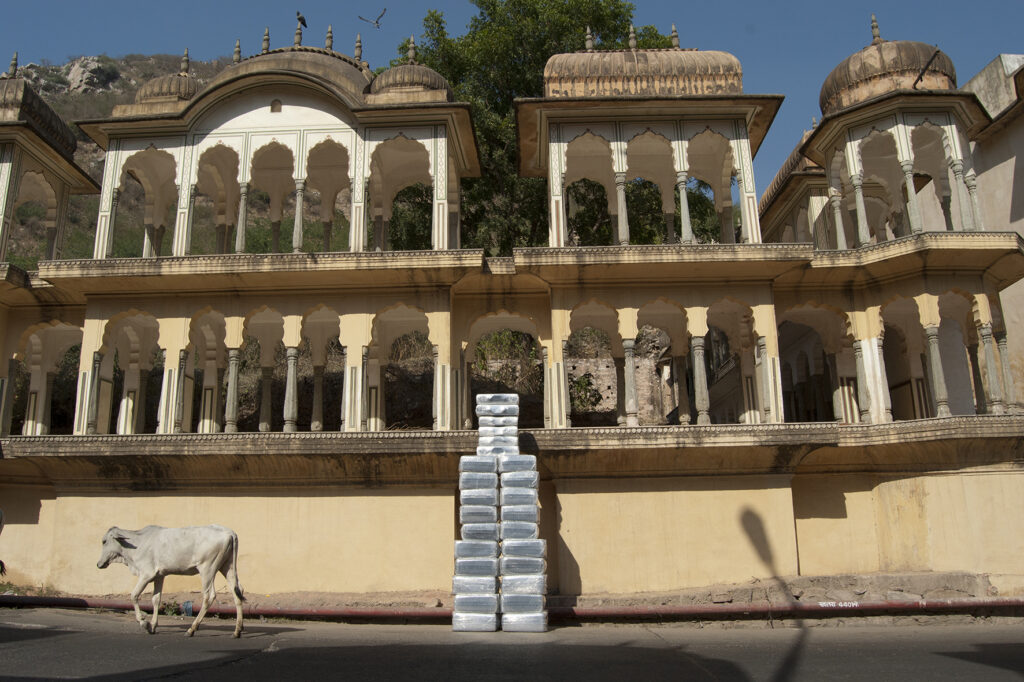Ivan Smith, Belper, United Kingdom
Fragment 1: The Repurposing of Developmental Dysfunction
Do you hoard stuff? If yes, what do you hoard? Are they things you buy, or stuff you find strewn about? Are they found objects, or things that your future projects are made of? Artists commonly hoard stuff in their studios, even if they don’t do so at home. Found objects are like agents of the changes to come. One never knows what one might pick out of the box, and when! It could be said that boxes of things can make an explorative sculptor out of a trained painter, as has proven to be quite true for my friend from Belper, Mr Ivan Smith.
I first met Ivan over a decade ago in the Green Park gallery district of London, where an artist was showing his sculptural works. At that time, both Ivan and I had been artists who had participated in the Sandarbh Artist residency in India, albeit separately; which at once, became a topic of conversation as we had a number of common friends. Since then I followed his artistic progress off and on via social media, and yet it is only recently upon meeting him during the latest iteration of the Sandarbh Artist Residency 2023, that I found an opportunity to talk to him at length, and in depth. It felt like a conversation waiting to happen.
In 2015, I met Ivan for the second time, in another edition of the Sandarbh residency titled A Tourist Everywhere, we briefly worked together and I had the chance to write a short text about his work. He had made a multi site installation with a pile of suitcases, quite reminiscent of the plight of people in transit. It was like a mobile monument of the constant flux of human migration. The work at once rang a bell, as I had myself been in transit quite a lot as an urban nomad/traveler for over a decade.
Recently when we met in 2023, I got the opportunity to have deeper conversations detailing his artistic processes, and could somewhat imagine his background as a transmedia sculptor/ installation artist toiling away against the post-industrial backdrop of the Thatcher years – a time of significant urban dereliction in mining towns that resulted from the de-unionisation of coal miners. Prior to this conversation, my insight into his artistic processes was somewhat superficial and immature at best. It is only now that I have built a clearer picture of his approaches to art making.
Luggage Mountain – multi site installation, Jaipur, India 2015
As the son of an engineer, Ivan may have unknowingly engineered himself into a certain radical acceptance of the works that he later came to be known for, as he endeavoured to run with a gang of Fine Rats excavating, reorganising and repurposing the dereliction and abandonment of a nihilistically decaying post-industrial Birmingham. The context of a post industrial dystopia that he delved into for a significant part of his artistic career, became clearer to me. Speaking to Ivan about his formative years reminded me of a quote by the great French philosopher Albert Camus:
“Accepting the absurdity of everything around us is one step, a necessary experience: it should not become a dead end. It arouses a revolt that can become fruitful”.

Ivan’s formative years were spent battling the cult of the Ronald Raegan inspired super capitalist agendas of the Thatcher era. Perhaps the shared plight of de-unionised coal miners has rubbed its way into his contextual environs for a significant time. Would it then, also not be erroneous to place Ivan’s work with the Fine Rats International within the realm of pioneering spirit? I would in retrospect, and with twenty-twenty hindsight, consider post industrial independent art practices that rapidly sprung up in many alternate spaces in the 90’s; as a proto geo-caching subculture of sorts, that was aptly located within a dystopian urban landscape reminiscent of the globalisation that played itself out in the United Kingdom of three decades ago; long before mobile app driven urban exploration became ever so popular in this day and age.
Down the Drain, 1995, City Centre Wasteland, Birmingham, UK
Time is a constant. However, happenings are transitory, ephemeral, and spontaneous. In my humble opinion the Fine Rats International’s projects offered its viewers a unique time bound experience by exhibiting their works for one night only. The brevity of this experience itself resembles an enthusiasm that one may have for a quick flirtation, which with its ephemerality is far more engaging than exhibits that run the course of weeks or even months (e.g. biennales, gallery shows, museum collections etc.).
Who doesn’t love a one night stand, or a temporary fix? Isn’t ideation just a quick fix? Then why not one night exhibitions?
Ivan says, that in the 90’s, as the gang of fine rats ran the alleyways of abandoned spaces, art making was just a melting pot of quick expression, with its interventionist intent, and with its sporadic occurrences, in a time when the decaying environs of a post industrial urban wasteland was an emerging phenomena, unwillingly brought about by policy, politics, and governmental dysfunction.
With a narrative such as this, one tends to remember the epic words of the British/American poet T. S. Elliot:
“Let us go then, you and I,
When the evening is spread out against the sky,
Like a patient etherised upon a table;
Let us go, through certain half-deserted streets,
The muttering retreats,
Of restless nights in one-night cheap hotels,
And sawdust restaurants with oyster-shells:
Streets that follow like a tedious argument
Of insidious intent,
To lead you to an overwhelming question …
Oh, do not ask, “What is it?”
Let us go and make our visit”.
– From The Lovesong of J. Alfred Prufrock by T. S. Elliot

Fragment 2: Dominion of Multiplicity
What’s time is it? Regardless of what the clock says, the time is always now, because we live in the now and we will die in the now. The real question is what on earth is not ephemeral?
The world of historicisation, documentation, and archiving on one hand; and the ever flowing, changing, and sporadic trysts of artistic interventions in public spaces, will and must remain fundamental to our perception of how art is made, shown, remembered, or forgotten. What do art critical and historical discourses offer, other than descriptions of stored edifices of an artificial nostalgia borrowed from snapshots of transitory ideation? What good is posterity if the experience itself is lost in time? Immersive environments such as ephemeral installations and performance art, only serve to prove this further as the experience of viewing a work of art itself is in constant flux.
The Things That Live in Boxes
The somewhat Dadaistic practice of Ivan’s habit of hoarding found objects for later appropiation and assemblage into artworks, raises the questions – are they boxes of things or boxes of possibilities – or of ideas, experiments, and explorations? Had he not found and accumulated so many things, would he have stepped away from the canvas and mapped his musings onto real space?
Ivan is fascinated by multiples, or variations of items, the economics of which catalyses the potential of making assemblages out of found objects, rather than limiting the objects to the servitude of function; because objects lose function the very moment they are discarded.

Perhaps in losing its function, an object acquires new meaning, just the way an abandoned space makes way for artistic intervention.
Collectibles are for posterity, but boxes of things are impregnated by the possibily of transmutation from a mere object to a work of art. A found object waits to be worked upon, and in the same vein, an abandoned space awaits exploration. The repurposing of space, depends on the reorganisation of an environment, and in the same breath, the reinterpreting of a community or a lifestyle (as is the case with Ivan’s later works, especially in Sandarbh) often awaits an intervention.
‘The raw material is more important than the artwork”. – Ivan Smith
In my attempt to understand Ivan’s approach to art, I abstained from unnecessary interpretation (and explanation) of particular works. It is clear that the value of perceiving his processes takes precedence over interpretation. The self evident visual and aesthetic quality of his works seem to invite no jargon. I feel it is pertinent to not deconstruct, but to declassify the secret workings of Ivan’s approach to art. Perhaps we need to free the artist from banal theoretical constructs of art interpretation, analyses, and art writing.
By freeing ourselves from theoretical boxes of critical constructs (and the sewage of indecipherable literary jargon), we may find the wonders that hide in the boxes of things, which artists hold so dear.

This writing is just the start of a conversation. It is by no means a complete article. Please visit Ivan’s website to learn more about his artistic practice: Ivan Smith’s Website